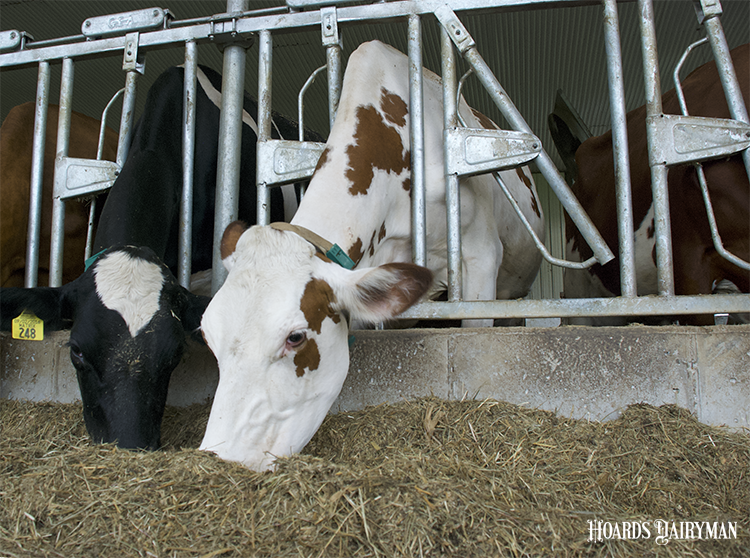
While farms have made positive strides toward reducing fresh cow health problems, the transition period remains a challenge for our dairy industry.
“Any health challenge in early lactation is a concern,” said Trevor DeVries, a professor at the University of Guelph. These setbacks at the start of lactation put cows at risk for lower milk production, reduced reproductive efficiency, and potential culling.
During the Cornell Cooperative Extension’s Virtual Dairy Day, DeVries focused on animal welfare for transition cows. As part of that presentation, he spent a few minutes discussing one important need of this vulnerable cow group: plenty of space.
It starts at the feedbunk, as many fresh cow problems can link back to reduced dry matter intake.
“For maintaining good health, one of the keystones is simply maintaining good dry matter intake levels,” DeVries shared. “If cows can’t maintain proper intake of a balanced ration, that’s going to lead to challenges in those animals in early lactation.”
This includes adequate amounts of feed and frequent pushups to ensure feed access. Where space comes into play is when there is competition at the feedbunk. “Competition to feed access can have a stark negative impact on dry matter intake,” DeVries noted.
It is recommended that pens for dry and transition cows have at least 30 inches of bunk space per animal.
To allow for more bunk space, DeVries indicated that in a freestall setting, stocking density should be less than 100%, and ideally, it would be close to 80%. In a bedded-pack pen, provide 120 square feet per cow, and if cows are calving in a group pen, provide 150 square feet per animal.
“Cows should be able to lie down when they want to,” DeVries said. “This is hugely important from a time budget perspective.”
Adequate rest keeps cows off their feet and ruminating more, which contributes to quicker digestion and a faster return to eating, DeVries said. “Anything that impedes these animals from lying down . . . will have an impact on their time budget,” he said, and negative repercussions will be the result.
Lastly, DeVries mentioned the often overlooked but critical need for drinking space.
“Even though cows only spend a few minutes drinking per day, drinking time is centered around specific times of the day, and we want to make sure nothing is hindering those animals from drinking enough water,” DeVries said. A minimum of 4 inches of drinking space should be provided per cow, and water should be available in more than one location, even if it is a small pen housing just a few animals.
“Health challenges at transition are a welfare concern,” DeVries summarized. “They result from reduced welfare but also lead to reduced welfare.” He acknowledged that it is a double-edged sword, but issues surrounding calving still need to be reduced, and adequate space for eating and resting is one way to do so.








